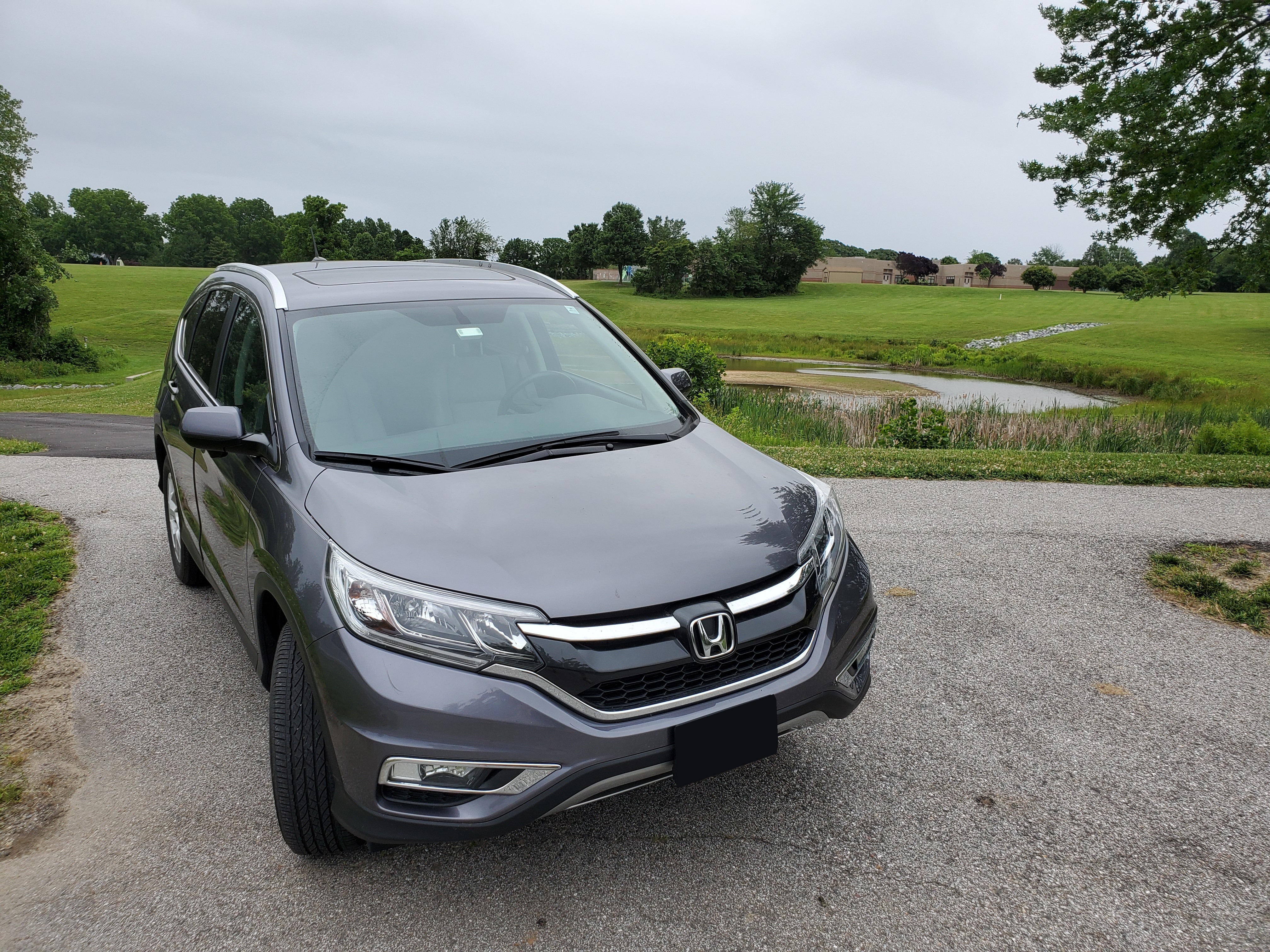
What is it?
The fourth generation CR-V might be considered an admission of guilt, or a sign of the times. It is a symbol of the domestication of the small SUV: no longer is the compact SUV an affordable, yet capable, platform for adventure: the decent gas mileage, parking maneuverability, and ample space of the compact SUV has won out over permanent four wheel drive, high approach and departure angles, and resistance to high-centering. Perhaps there is some loss of self-respect here, but perhaps the CR-V has just become more honest about the kind of people who buy it: why have an offroader, or at least something that purports to be one, when the most offroading you'll ever do is parking in a field at a corn maze? Perhaps it's better to retain the user functionality of an SUV and just put a road car underneath. This transformation from blocky SUV-lite to rounded not-a-station-wagon isn't unique to the CR-V, as Toyota's popular RAV4, Ford's Escape, and the cacophony of model names that is Chevrolet's Blazer-TrailBlazer-Equinox-Blazer lineage all made that transition. At least Chevy is back to the Blazer now.
The term "crossover" or "crossover utility vehicle" has been both good and bad for the car industry. On one hand, we now have a convenient, inclusive term for all the weird compact SUVs and minivans without sliding doors and the AMC Eagle, but on the other hand, "crossover" has become a buzzword. Crossover is so convenient, and so broadly applicable, that it could mean anything for any given car. I could tell you that the Dodge Journey and Jeep Cherokee are both midsize crossovers and you would have no idea from the name that one is effectively a minivan and the other is a bloated station wagon. "Crossover" has strengthened our ability to name and refer to cars and weakened our ability to actually describe them. So for this particular implementation of the crossover, what does that mean?

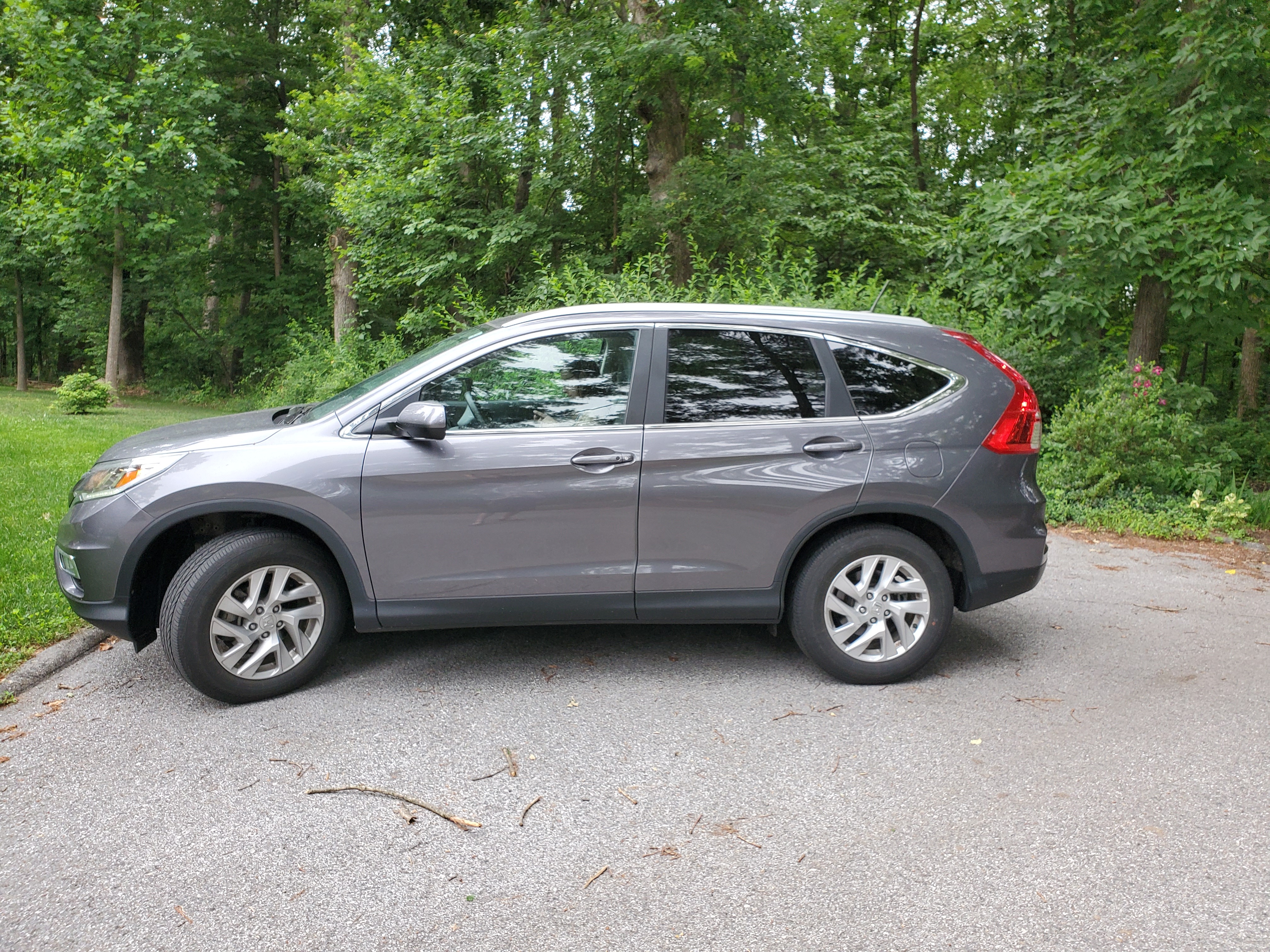
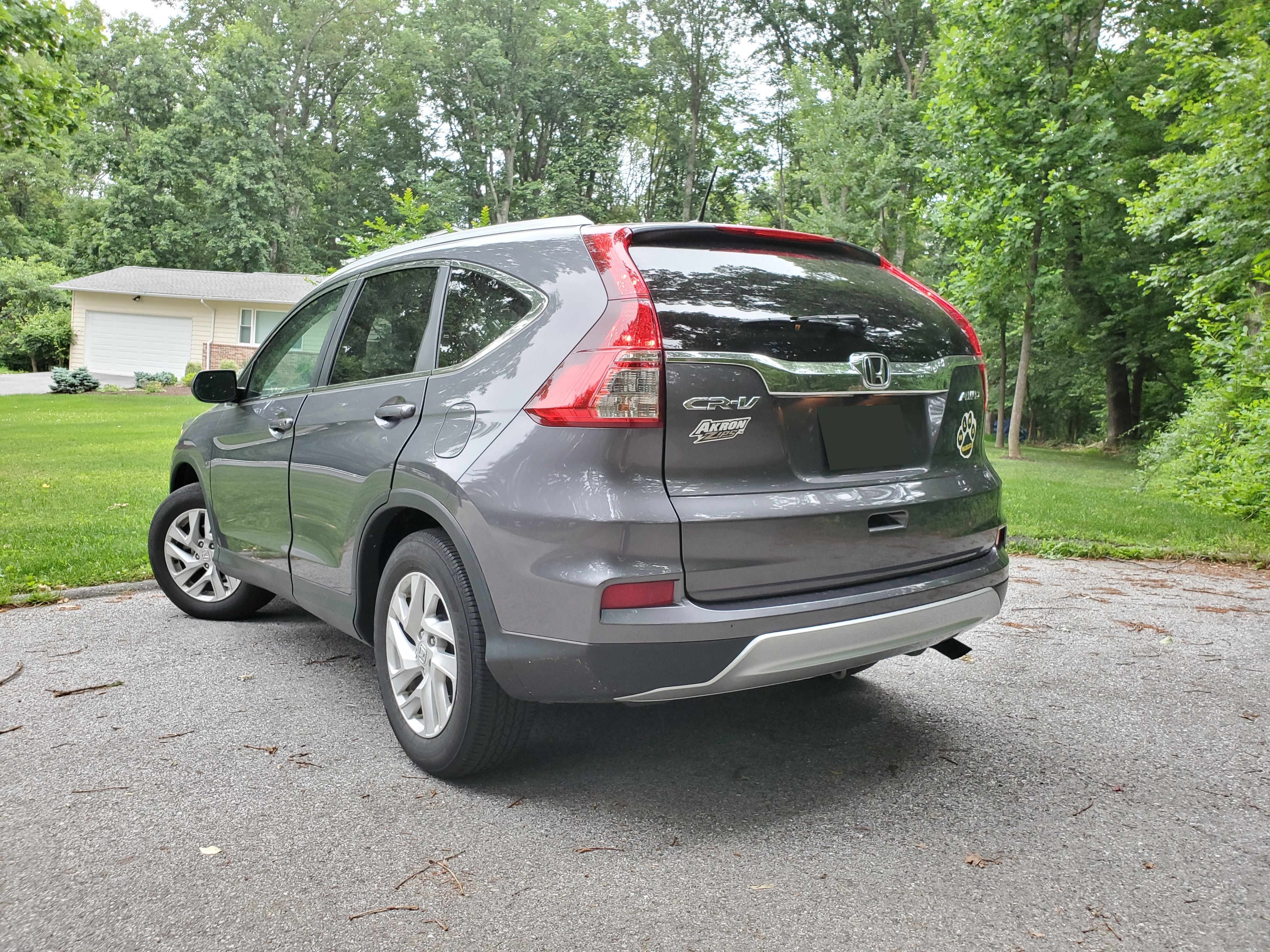
What is it like?
In not too many words, Honda's bread-and-butter midsize crossover is just a station wagon. It drives like a station wagon (sort of), has the space of a station wagon (trading rear overhang for height), and is clearly built to be a functional, yet comfortable machine to drag a family to the beach with.
I'll start with the parts of the CR-V you're supposed to care about the most, i.e. the "utility" part of Crossover Utility Vehicle. The CR-V's distinctive curiously bulbous rear window makes for additional cargo space, and clever folding rear seats open up just about the entirety of the cabin for cargo. For a family coming from a smaller minivan like the old short wheelbase Caravan or a Mazda5, the maximum space the CR-V affords should be satisfactory, though still limited by the height of the floor and the size of the vehicle.The rear hatch is actually huge, and spans the full height of the cabin, as well as its width between wheel wells, and the vehicle I drove had a rubber liner in the boot area to protect the interior from wet and dirty cargo. Overall the CR-V's cargo space is about what would be expected from a vehicle of its size, but Honda has done a good job of making it easy to configure for cargo and load. Moving apartments, buying hardware, and road tripping are all well within the scope of what the CR-V allows.
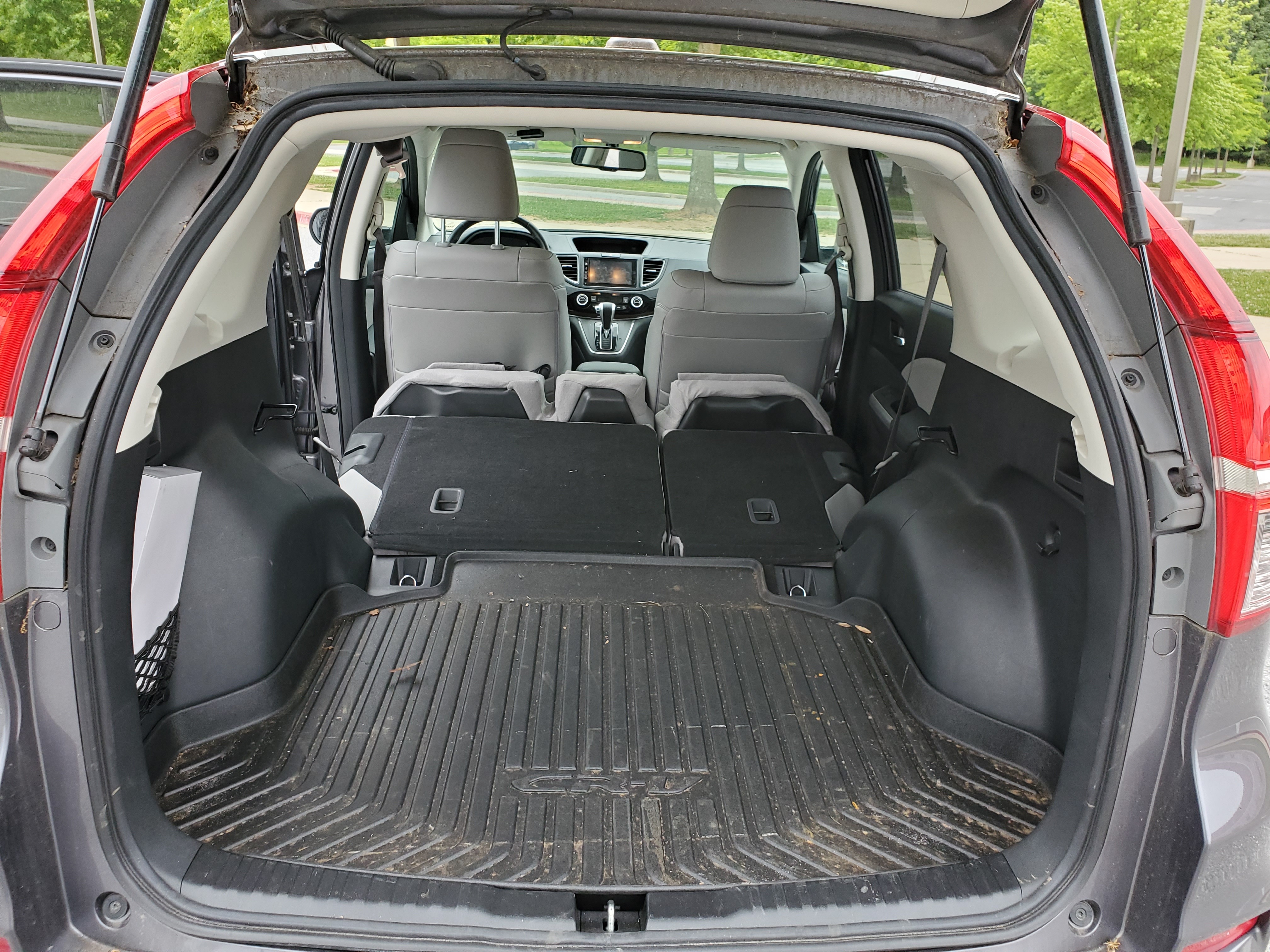
The CR-V treats its passengers well, in addition to its cargo. I drove a CR-V with cloth seats, but they were soft, breathed well, and I found more than adequate adjustability and headroom. The back seats are also incredibly spacious and comfortable, and will easily fit adults as well as children. I noticed some soreness of the lower back and buttocks after driving the CR-V for a while, which makes me wonder whether Honda has really improved their ergonomic design since my 2006 Civic (whose seats are hell on the buttocks), but for in-town jaunts, I can commend the quality of the CR-V's seats. The cabin is quiet and has plenty of cupholders and other dubiously useful nooks and crannies that us Americans love, and the front console cupholder is actually a single bin with moveable dividers, giving the driver and copilot plenty of options. This particular vehicle didn't come with rear seat entertainment, but in the age of the mobile divice, that isn't especially important.
The infotainment system is a little outdated for the car's time, but capable, and is veritably loaded with I/O options. Curiously, the one connector it seems to not have is a 3.5mm auxiliary input: since this car is pre-Carplay (or Android Auto), plugging your phone in with USB doesn't seem guaranteed to work, and in my case, froze my phone altogether. That said, the touchscreen makes for versatile input options, and the display is bright and easy to read. The HVAC system features dual-zone climate control and is completely unremarkable otherwise. In all honesty, the center console buttons all feel cheap and rental car-ish, and the interior in general is economy car-quality. Don't be expecting premium materials or masterful industrial design: Honda knew what they were about here, and didn't waste their time on unimportant details.
In terms of non-driver user experience, the Honda CR-V paints broad, masterful strokes of everyday practicality and rental-car normality. Fortunately, it retains some personality in the driver's user experience: Honda clearly put as much thought into making this a drivable car as they did making it a livable car.
First, the tools given to the driver for user interaction. The steering wheel is typical Honda, putting infotainment controls under the left thumb and cruise control on the right. Some extra little paddles dangle below, for controlling the phone functionality and voice recognition. While these prevent the thumb area from getting too crowded, they also give off the vibe that Honda had already crowded the wheel so much that they needed to move functionality elsewhere. The wheel is busy for 2015 and normal for 2019, so it sits at a happy medium of functionality. The headlights and wiper controls are exactly where they are in other Hondas, and the traction control and "Eco" buttons are to the left of the steering column, where those sort of things usually end up.
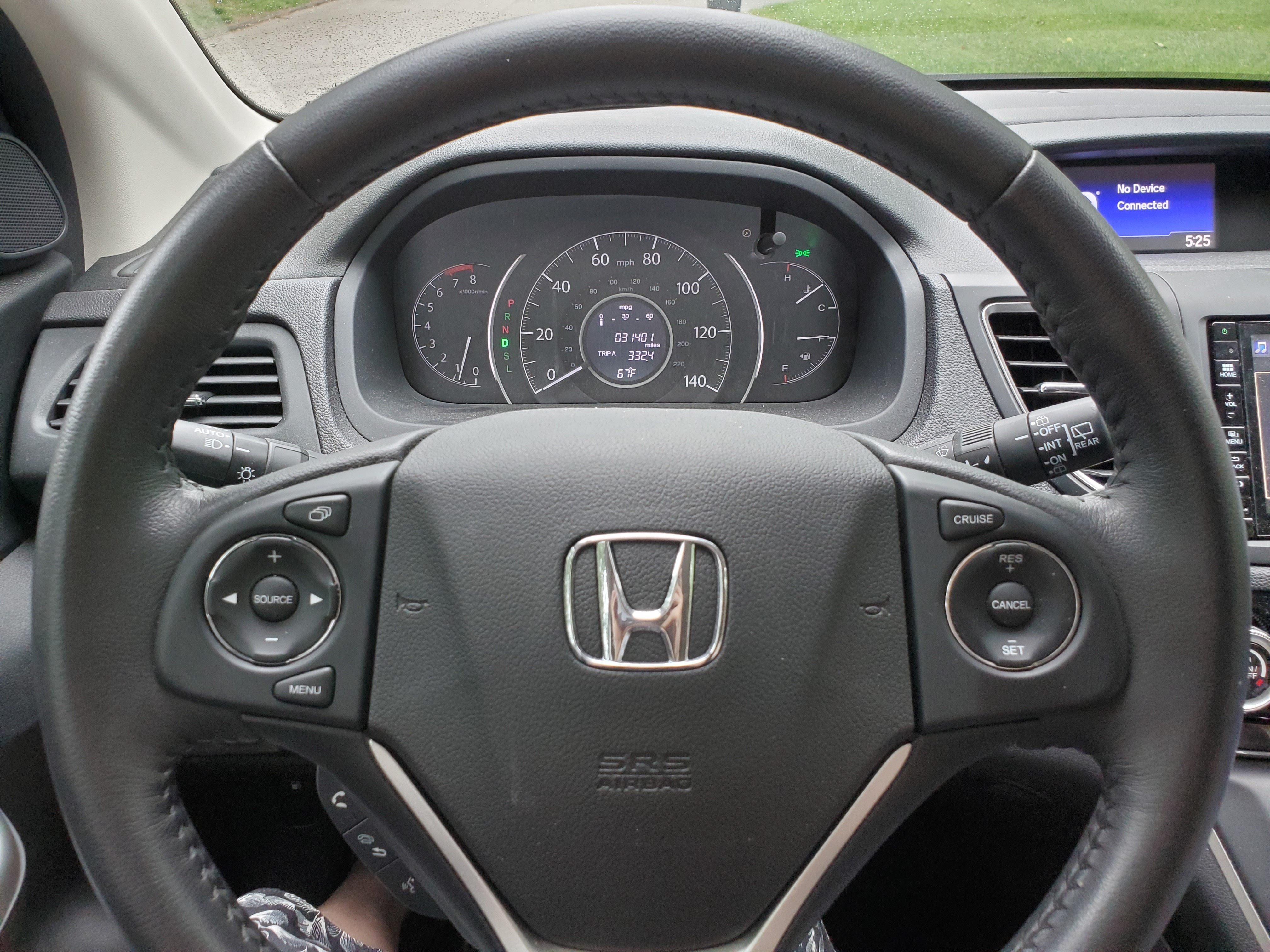
The gauge cluster is actually quite nice, and its styling really stands out. Honda borrowed Cadillac's trick from the second-gen SRX where a round display resides in the middle of a large speedometer, pushing the tach off to the left and the temperature and fuel gauges to the right. This makes for a neat, easy-to-understand layout of information: since the car uses a CVT, the driver doesn't even really need the tach. The aforementioned central display is not a multifunction display, but instead shows only a few fixed parameters, like mileage, trip data, and temperature. The actual multifunction display resides far up in the middle of the dashboard, in an odd move mirroring the eight and ninth generation Civics with their dual-level dashboards. This central display has media information and milage and the usual multifunction display content, freeing up space in the gauge cluster. This is an odd design decision, but it at least reduces clutter, even if it means that the driver needs to pull their eyes away from the usual road-gauge-road-mirrors circuit.


The lower display is used for the two cameras the vehicle has equipped. One is the typical reverse camera, which boasts three different fields of view, making backing to a trailer and precise maneuvering easier. The other is under the passenger-side mirror, and provides a view of that substantial blind spot. Both cameras are almost necessary because of the massive D-pillars and very high sill on the rear gate's window. This merge camera is a very novel idea, one that I have never seen anywhere else, but while a bit odd, it undeniably makes the car easier to operate for some people. For those with limited flexibility, the reverse camera, offside camera, and upright seats that sit far off the ground are all very helpful features.
The foot pedal parking brake saves space on the center console, and the shifter sits on a pedastal at the bottom of the dashboard, comfortably within reach of the driver. The shifter's detents are extremely firm, as seems to be Honda's wont, but it is otherwise unremarkable. Working the shifter is fine for most purposes, but shifting into Drive from Sport or Low takes care, as the firm detents can lead to applying too much force and pushing the shifter all the way to Neutral instead. I have accidentally redlined my 2006 Civic shifting into Neutral instead of Drive from Drive-3, as that car also has extremely stiff shifter detents. The transmission also has a Low gear; this is obviously only useful for slower-speed offroading where the user doesn't want to lose torque by letting the transmission shift up too high.
For normal driving, the Drive mode in the CVT is completely logical. The engine never drones needlessly, and as soon as you let off the accelerator, the transmission shifts up to keep the engine turning slow. Flooring the accelerator results in the engine climbing to about 5000 rpm and delivering respectable torque in the process. The transmission never hunts for ratios and gives the CR-V quite respectable gas mileage, given its weight, body shape, and engine. Slight speed adjustments, such as might be made on the highway, aren't really picked up by the transmission, and thus fine speed control is difficult. Sport mode changes only engine behavior and transmission logic: the steering feel stays exactly the same. Sport mode lets the engine rev higher, which is useful both for passing and for engine braking, as the CVT would normally shift up and prevent engine braking. Eco mode is toggled with a button, and doesn't actually change behavior too much, basically slowing throttle response and biasing towards taller transmission ratios: this works to attenuate the behavior of leadfoot drivers, and the gauge cluster has a kind of "good driving indicator" that lights up green when the car is driven efficiently in Eco mode.
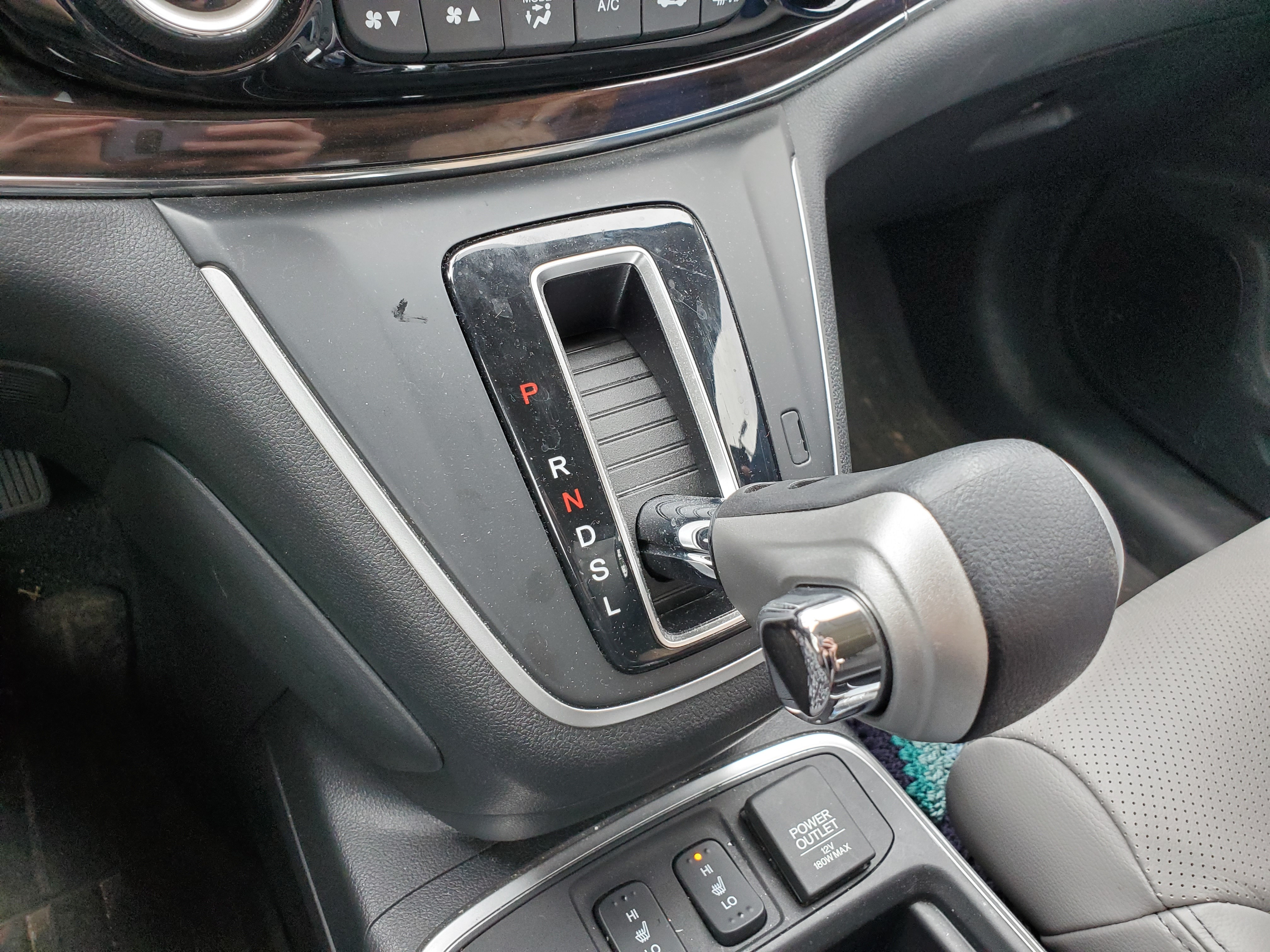
The 2.4L engine develops about 180hp and 180lb-ft, and in most circumstances is well-behaved. However, peak power isn't reached until just over 6000 rpm, and the transmission, even in Sport mode, almost never lets it rev that high. In the CR-V, you will see 160 horsepower at most, as the transmission jealously shrouds the engine's true performance behind shift logic and no available "manual" shifting. For a family car, that isn't too much of a problem, but drivers who want to make the most of their car no matter the model will find it aggravating. This means that the CR-V is actually dog slow! It's so slow! The Subaru Outback gets the same acceleration with less power because its manual shift mode actually lets its 170hp engine rev to redline, and the Outback also has an option for a 250hp V6 that should blow most midsize family cars out of the water, though it comes at a steep price.
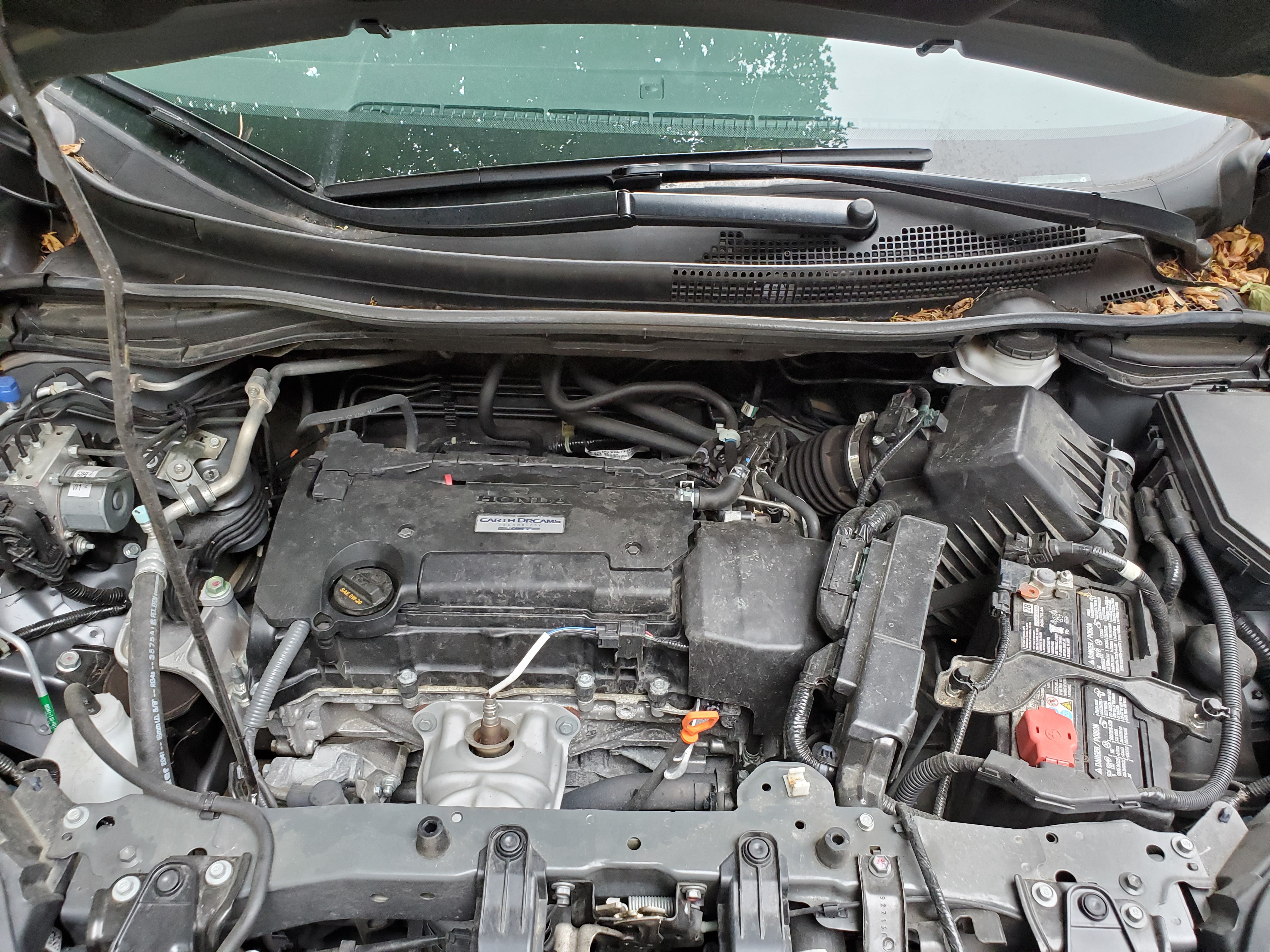
Steering and suspension feel of the CR-V is actually surprisingly responsive, for a car of this size and purpose. Honda definitely tried to preserve some aesthetic of performance, if not driving excellence itself, in the fourth generation CR-V. Road feel is very good for an SUV, with the shocks and springs just stiff enough that the road texture and suspension behavior is well apparent to the driver. Steering is also surprisingly heavy and responsive (for a crossover family car) and there is no floatiness in the steering or suspension. The car rides well in most scenarios, and is quite controllable. Cornering is about what you expect: The tall stance of the car leads to substantial body roll, though less than might be expected: that said, this car does not feel confident entering or leaving corners, and reaching its limits of grip is likely a mistake that requires hospital bills rather than countersteering to recover from. Overall, Honda has succeeded at making the Honda CR-V feel like a nimble, sporty crossover, and given Americans' driving habits, that's good enough. If you want real performance we all know you'll be getting an AWD sedan instead. (Or the A4 Allroad...)
The CR-V boasts Honda's "Realtime" all wheel drive system, which, despite its phonetic similarity to "full-time", is not a full time AWD system, and despite the visual similarity of some AWD and 4WD badges, is not a four wheel drive system. The CR-V uses a transverse front engine that usually just drives the front wheels. Under acceleration, cornering, and wheel slip conditions, the car will send torque to the rear wheels, but this car ultimately handles like a front wheel drive car. All wheel drive does more to make the driver feel safe (and gives them a bit of extra grip to work with in slippery conditions), than to make it some kind of offroad and towing chamption. There is no hill descent control or offroad driving mode like the last-generation Subaru Outback has (the CR-V's competitor from Subaru), and in demanding conditions, the driver may well notice the lack of torque coming out of the rear wheels. The CR-V is clearly an on-road car: for most purposes apart from peace of mind and putting more carbon in the atmosphere, the AWD system doesn't do much for the typical driver.

What does this car mean?
The Honda CR-V is a vehicle that puts more stock in feeling the right way than acting the right way. The CR-V understands that ultimately, perception is everything to people. Humans are inherently unreliable observers and narrators: our feelings, the imperfections (or perhaps quirks/constraints) of our bodies, and our expectations all affect how we experience the world we interact with, and the places and artifacts that occupy it. Facades and masks, not only of bodies, but of minds, of the intentions of organizations and physical things, work because our ability to perceive our world is limited in scope, but our ability to act on and extrapolate from those perceptions is far more powerful. It doesn't matter that the Honda CR-V actively prevents the driver from making the most of its power: it has a growly engine and punchy torque (until the transmission upshifts), and for most people, that signifies performance. Tight steering and firm shocks do not a sports car make, but the road feel of the CR-V makes the driver feel that they are in a more agile, more capable vehicle than they really are. It does not matter that the CR-V doesn't measure up to the promise that the driver extrapolates as true: normal people won't push its limits that far anyways. Does it matter that the CR-V's offroad capabilities aren't really there? Not really; they make the driver feel secure that if something happens, their car's smart traction control will save them. And that really gets to the heart of how the CR-V is meant to feel: It's meant to feel safe. Sensitive steering lets you dodge out of danger. AWD lets you get there safe in bad weather, and the quiet, high cabin that puts your eyes above the roofs of other cars makes you feel as though you have command of your situation. You'll note from my Audi A4 Allroad review that this is classic SUV rhetoric, but is that bad? Is it wrong to make people feel safe? Is it wrong to provide people a vehicle (literally) through which to traverse and negotiate adversity? No! People like to be comfortable! They like to be safe! They like to have a car where they can throw it into Drive and pull out of the driveway and get lost in comfy seats and music from the old family iPod that lives in the console bin and the heavy handling and the quiet engine and forget about the things they can't control. This is that car. The Honda CR-V offers escape, not from danger, but from uncertainty, and the heavy weight of the future. The CR-V feels safe and acts predictable, and these days, the world at large doesn't really.
If you want a car that nobody will bat an eye at, and that will reward you with years of completely average driving, get a CR-V. If you want a sensible crossover that's capable on mixed surfaces and has neutral enough handling to not be worrying, get a Subaru Outback. Both will make you feel safe, but both do it in different ways. Getting the Outback lets you hang with all the cool kids on Subaru forums though.